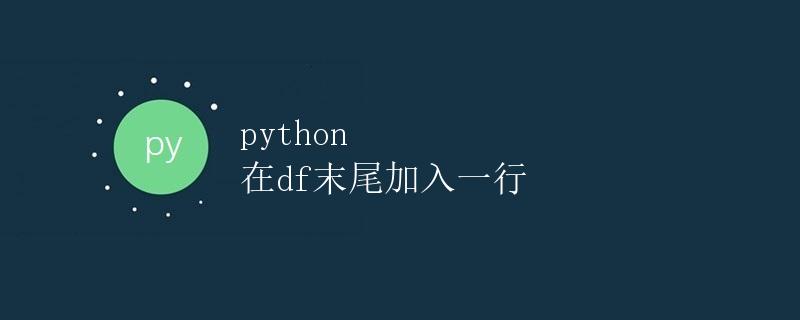Python 给DataFrame末尾加入一行数据

在使用Python进行数据处理和分析时,经常会用到pandas库中的DataFrame数据结构。有时候我们需要在DataFrame末尾加入一行新的数据,本文将详细介绍如何实现这一操作。
方法一:使用loc方法
我们可以使用DataFrame的loc方法来添加新行。首先创建一个示例DataFrame:
import pandas as pd
data = {'A': [1, 2, 3],
'B': [4, 5, 6]}
df = pd.DataFrame(data)
print(df)
运行以上代码,得到的输出如下:
A B
0 1 4
1 2 5
2 3 6
接下来,我们通过loc方法在末尾添加一行数据:
new_row = {'A': 4, 'B': 7}
df.loc[len(df)] = new_row
print(df)
运行以上代码,得到的输出如下:
A B
0 1 4
1 2 5
2 3 6
3 4 7
方法二:使用append方法
除了loc方法,我们还可以使用DataFrame的append方法来添加新行。继续使用上面的示例DataFrame:
data = {'A': [1, 2, 3],
'B': [4, 5, 6]}
df = pd.DataFrame(data)
new_row = {'A': 4, 'B': 7}
df = df.append(new_row, ignore_index=True)
print(df)
运行以上代码,得到的输出和上面方法一的结果相同:
A B
0 1 4
1 2 5
2 3 6
3 4 7
注意事项
在使用以上方法时,需要注意以下几点:
- 新行数据的格式必须和DataFrame的列名对应,否则会报错。
- 如果DataFrame中有索引列,可以使用ignore_index参数来重新设置索引,否则新行的索引将为NaN。
通过本文的介绍,相信读者已经掌握了在DataFrame末尾添加新行的方法。在实际数据处理中,可以根据具体需求选择合适的方法来实现该操作。
 极客笔记
极客笔记